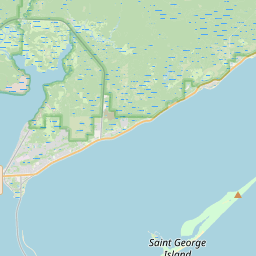The Dr. Alvan W. Chapman House
Historical marker location:
82 6th Street, Apalachicola, Florida
( Marker is at the intersection of Avenue E (U.S. 98) and 6th Street, on the right when traveling west on Avenue E.)
Marker installed: 2012






© OpenStreetMap contributors
Loading...
Searching for other points of interest within 3 miles of this location.The Seminole Wars, a series of conflicts between the United States government and the Seminole Tribe of Florida, lasted for over 40 years from 1817 to 1858. The wars were some of the longest and most expensive conflicts in American history.
About Franklin County
Franklin County Timeline
Franklin County, located in the Florida Panhandle, has a rich history that dates back centuries. The area was originally inhabited by Indigenous peoples, particularly the Apalachee and Timucuan tribes, who relied on the abundant natural resources of the region for their livelihoods. The first European explorers arrived in the late 16th century, with Spanish explorer Panfilo de Narvaez landing near present-day Franklin County in 1528.
Throughout the following centuries, Franklin County saw a turbulent period of colonization and shifting power dynamics. In the late 18th century, the region became a part of Spanish West Florida, which later fell under British control during the American Revolution. The area eventually became part of the United States through the 1819 Adams-Onis Treaty, which established the boundary between Spanish Florida and U.S. territory.
The early 19th century brought significant changes to Franklin County, as the establishment of major trading posts and shipping routes led to an economic boom. The town of Apalachicola, situated on the Apalachicola River, became a hub for the cotton and lumber industries, attracting entrepreneurs and settlers from various backgrounds. The rise of Apalachicola as a major port contributed to the growth of the county's population and economy.
However, the Civil War brought significant challenges to Franklin County, as it was caught in the middle of conflicting loyalties. While the region initially sided with the Confederacy, it faced Union occupation throughout the war. The county experienced significant economic decline during this period, which continued into the post-war era.
In the years that followed, Franklin County slowly recovered and underwent further development. The fishing industry, specifically the harvesting of oysters and seafood, became a prominent economic activity as the county regained its role as a vital coastal community. Today, Franklin County remains a picturesque destination known for its natural beauty and historic charm, attracting visitors who appreciate its diverse heritage and close connection to the Apalachicola River and Gulf of Mexico.
Throughout the following centuries, Franklin County saw a turbulent period of colonization and shifting power dynamics. In the late 18th century, the region became a part of Spanish West Florida, which later fell under British control during the American Revolution. The area eventually became part of the United States through the 1819 Adams-Onis Treaty, which established the boundary between Spanish Florida and U.S. territory.
The early 19th century brought significant changes to Franklin County, as the establishment of major trading posts and shipping routes led to an economic boom. The town of Apalachicola, situated on the Apalachicola River, became a hub for the cotton and lumber industries, attracting entrepreneurs and settlers from various backgrounds. The rise of Apalachicola as a major port contributed to the growth of the county's population and economy.
However, the Civil War brought significant challenges to Franklin County, as it was caught in the middle of conflicting loyalties. While the region initially sided with the Confederacy, it faced Union occupation throughout the war. The county experienced significant economic decline during this period, which continued into the post-war era.
In the years that followed, Franklin County slowly recovered and underwent further development. The fishing industry, specifically the harvesting of oysters and seafood, became a prominent economic activity as the county regained its role as a vital coastal community. Today, Franklin County remains a picturesque destination known for its natural beauty and historic charm, attracting visitors who appreciate its diverse heritage and close connection to the Apalachicola River and Gulf of Mexico.
Franklin County Timeline
This timeline provides a concise overview of the key events in the history of Franklin County, Florida.
- 1832 - Franklin County is created from portions of Gadsden County.
- 1839 - Apalachicola becomes the county seat.
- 1840 - Population of Franklin County is approximately 2,400 people.
- 1851 - Eastpoint is established as a small fishing village.
- 1860 - The county population reaches nearly 3,000 people.
- 1861-1865 - Franklin County is greatly impacted by the American Civil War.
- 1885 - The railroad reaches Apalachicola, boosting the local economy.
- 1935 - The completion of the John Gorrie Memorial Bridge connects Apalachicola to Eastpoint.
- 1992 - Hurricane Andrew causes significant damage to Franklin County.
- 2004 - Hurricane Ivan further devastates the area.
- Present - Franklin County is known for its natural beauty, coastal tourism, and fishing industry.